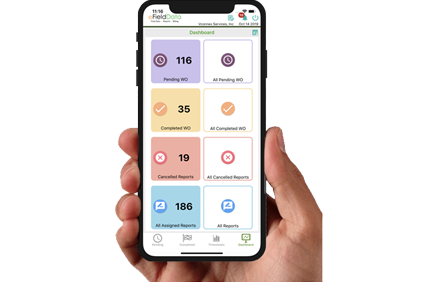Set Goals
First, you’ll need to set some goals. "Efficiency" can mean a few different things for a field data collector or engineer, but usually it means getting the job done effectively in less time, with fewer headaches. Depending on your priorities, that could mean focusing on things like:
- Accuracy.
First, how accurate does your data need to be? Chances are, the more accurate it is, the better. Is there a way to make your data more accurate? Or are there checks in place that can hasten your collection without compromising data accuracy?
- Automation.
Automation is one of the easiest ways to save time. Why waste time on doing something manually when it can simply be taken care of on your behalf?
- Methodology and workflow.
You can also improve efficiency with the help of better methodology and workflow. What steps are you following to collect field data? Can these steps be edited, removed, or refined? What purpose is each step serving?
- Training.
You may be capable of improving your own efficiency, but what about the efficiency of your team? Oftentimes, this can only come with better training. Do your employees know what they’re doing? Are you confident in the quality of their work?
Which of these are most important to you? Which ones will you devote the most time and resources to?
Choose the Right Platform
These days, most field data collection is accomplished with the help of at least one app or digital platform that hastens or manages the data collection process. Choosing the right app can make or break your efficiency, since the nature of your app may direct your work, save you time, or waste your time—depending on its features.
- Communication.
First, think of the communication features in the app and how accessible those features are. Does this app make it easy to delegate tasks to other people on your team? Can you leave comments on the work you’ve done? Can you see what comments other people have left?
- Mobile availability.
You’re likely collecting field data from many different locations, and you can’t always bring a hefty laptop with you. Does this platform work on a wide variety of different devices? Can you access it and use it conveniently on a smartphone, just as you would a traditional computer?
- Overall UI.
What is the overall user experience like? When you see this platform for the first time, do you have an understanding of how it’s supposed to work? Is it clear where you’re supposed to enter data, or do you have to wade through hours of tutorials to figure out what to do? This is important to make your life easier as a field data collector, but also as a trainer of new employees.
- All-in-one features.
Ideally, you’ll find a platform that allows you to accomplish nearly all of your responsibilities at once. For example, collection, management, reporting, and communication/distribution should all be available.
- Automated capabilities.
Anything you automate is going to save you time and improve the reliability of your work. What tasks or responsibilities is this platform capable of automating?
- Centralized reporting.
Reporting is probably a big part of your data collection responsibilities. Is there a single place where you can create, edit, and distribute reports?
- Notifications.
Automatic notifications can help you stay on task, meet your deadlines, and keep you posted on the progress of others. Does this app have a notification center that allows you to create and manage these alerts?
- Client access.
As an added bonus, some apps allow you to control client access. For example, you could give clients a login and have them view the relevant data to their organization firsthand.
- Integrations.
What integrations does this platform offer? Can you use it conveniently with other apps used within your organization? Is it compatible with your other apps?
You’ll also need to consider factors like cost, and time to deployment, but your first priority should be improving the efficiency of field data collection.
Field Data Collection Documentation
Choosing the right platform is a great first step to improving your data collection efficiency, but you’ll also have to decide how to use it—and instruct your team members how to use it in the future. If multiple people are using the platform in different ways, or if you change your workflow in response to every new project, you’re going to end up with a mess.
The solution is to document your processes as thoroughly as possible. Explain how to use the app for your own purposes, the exact steps to follow when collecting field data, and how and when to create new reports.
Trial and Error
No person or organization is going to improve their efficiency or productivity perfectly on the first attempt; that’s because mastering efficiency is a gradual and iterative process. With the right software in place, you’ll be leaps and bounds ahead of where you were, but you’ll still need to make ongoing changes to your approach.
The right way to approach this is like a scientist, collecting data as you experiment with different variables, and observing the changes in your final results. Are you seeing more consistent data and fewer errors? Are you spending less time per task? If so, keep the change. If not, you may need to try something else.
If you’re interested in collecting field data more efficiently, you’ll need the right software to get the job done. With eFieldData, you can automate your workflow, collect data, create and send reports, and even handle billing—all within one platform. Request a demo today, or contact us to learn more!
